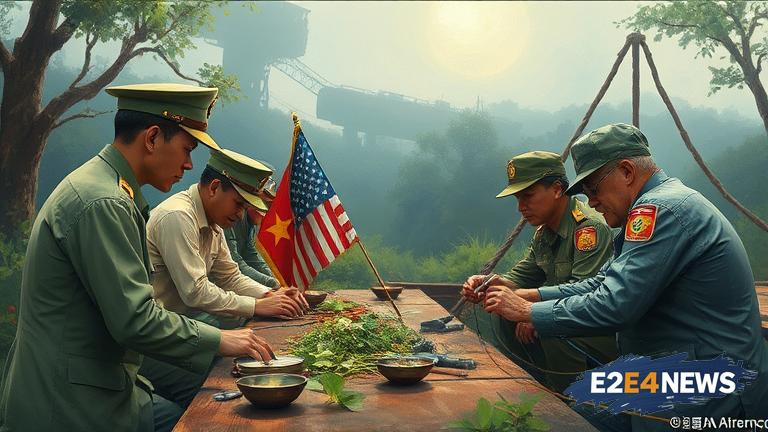The Vietnam War, which lasted from 1955 to 1975, was a prolonged and devastating conflict that resulted in the loss of thousands of lives. Among the casualties were many American soldiers who went missing in action, leaving behind grieving families and a nation seeking closure. In recent years, Vietnam and the US have been working together to recover and identify the remains of these missing soldiers. This collaborative effort is a significant step towards healing the wounds of the past and promoting reconciliation between the two nations. The process of recovering and identifying MIA remains is complex and painstaking, involving meticulous research, excavation, and DNA analysis. Vietnamese and American teams have been working together to locate and excavate crash sites, graves, and other areas where remains may be found. The US Department of Defense’s POW/MIA Accounting Agency has been leading the effort, with support from the Vietnamese government and other organizations. The agency uses advanced technology, including DNA analysis and forensic anthropology, to identify the remains and match them with missing soldiers. The identification process can take years, even decades, but it is a crucial step towards bringing closure to the families of the missing soldiers. The recovery and identification of MIA remains is not only a humanitarian effort but also a symbol of the growing friendship and cooperation between Vietnam and the US. The two nations have made significant progress in recent years, with the US lifting its embargo on Vietnam in 1994 and the two countries establishing diplomatic relations in 1995. Today, Vietnam and the US enjoy a strong and growing partnership, with cooperation in areas such as trade, security, and education. The collaboration on MIA remains recovery and identification is a testament to the strength of this partnership and the commitment of both nations to promoting peace and reconciliation. The effort has also helped to promote people-to-people diplomacy, with many Vietnamese and American citizens working together on the project. As the recovery and identification of MIA remains continues, it is a reminder of the importance of remembering and honoring the sacrifices of the past, while also looking towards a brighter future for both nations. The collaboration has also sparked hope for the families of the missing soldiers, who have waited for decades for news of their loved ones. The identification of remains has brought closure to many families, and has also provided an opportunity for them to finally say goodbye to their loved ones. In conclusion, the collaboration between Vietnam and the US on MIA remains recovery and identification is a significant and meaningful effort that promotes reconciliation, healing, and friendship between the two nations.
